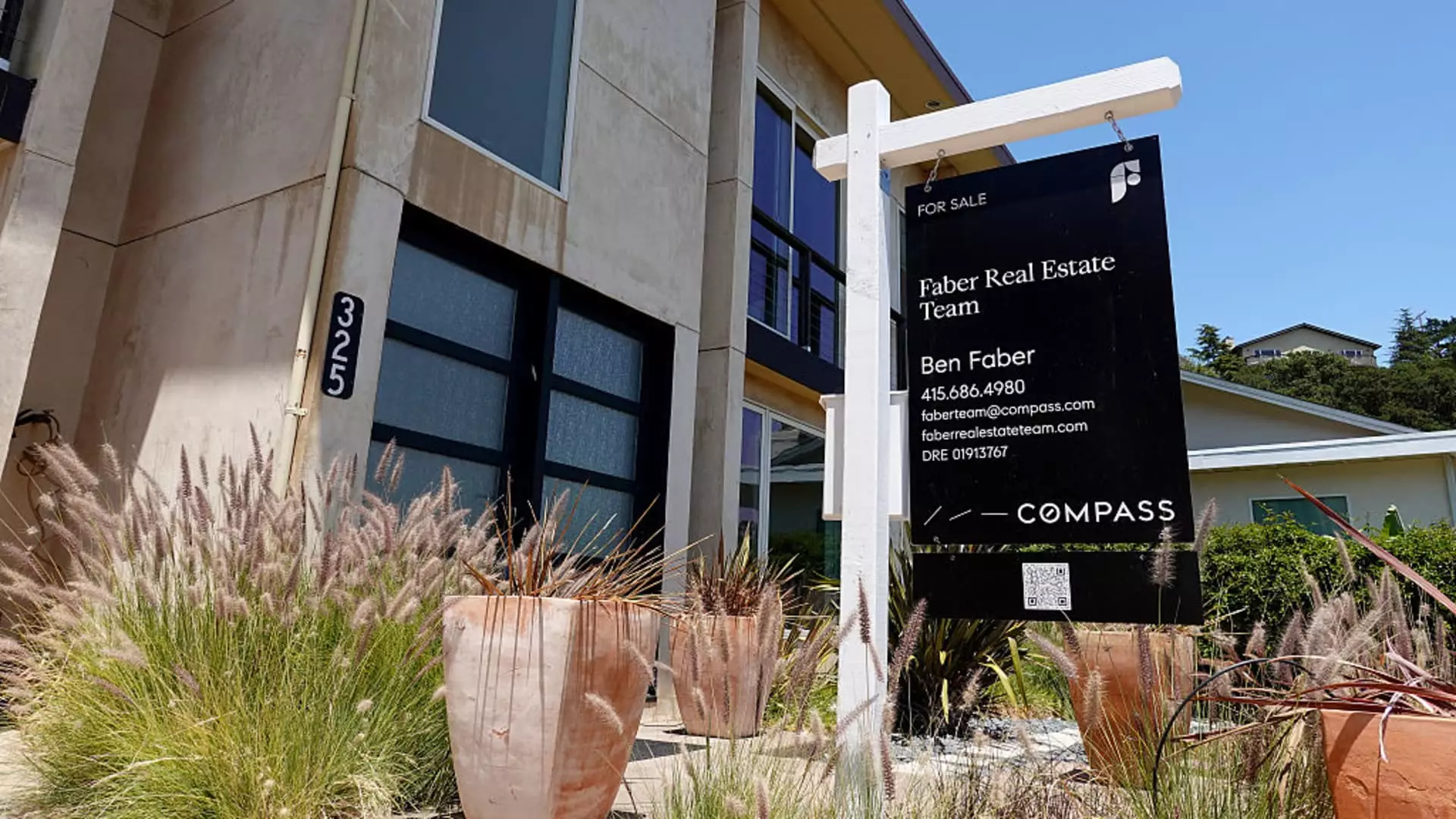The housing market is at a pivotal junction, demonstrating the consequences of shifting supply and demand dynamics. Recent reports indicate that home prices are beginning to descend, a stark contrast to the rampant appreciation witnessed during the pandemic. The S&P CoreLogic Case-Shiller Index revealed a mere 2.7% year-over-year increase in April, down from a more robust 3.4% in March. This modest rise marks a significant deceleration and highlights a broader cooling trend that could suggest a more permanent shift.
The widespread belief that homes would continue to appreciate indefinitely has begun to crumble as America grapples with rising mortgage rates, which have now crossed the 7% threshold, coupled with increased supply. The once-favored pandemic hotspots in the Sun Belt are witnessing the sharpest price declines, forsaking the rapid gains they once enjoyed. Is this the foreboding edge of a market correction? The answer increasingly leans toward yes, as sustained price stagnation prevails.
A Challenge for First-Time Buyers
The plight of first-time homebuyers has never been more pronounced. A mere 30% of May sales involved first-time purchasers, plummeting from the historical norm of 40%. The combination of soaring interest rates and high home prices means these aspiring homeowners face an impossible financial landscape. Monthly payments are reaching new generational highs, effectively pricing out a substantial portion of the market.
The landscape is further exacerbated by the reluctance of existing homeowners to enter the market. Many are tethered to their low mortgage rates established during the pandemic, creating an artificial scarcity. With few homes available for purchase, the entry barriers are ever higher. If we consider that just 6% of sellers are at risk of losing money from their home sales, it really illustrates the longevity of this market’s current structure, despite its precarious position.
Regional Market Shifts: A Shift in Power
What’s particularly alarming—and perhaps necessary for a recalibration of the housing landscape—is the reshuffling of regional real estate performance. Historical powerhouses are beginning to falter, making way for areas of the Midwest and Northeast that are seeing encouraging price increases. New York, Chicago, and Detroit are now at the forefront, while former favorites like Tampa and Dallas are left in the dust.
This shift away from dependency on speculative growth means we may be witnessing a housing market driven more by fundamental factors. While this maturation process could introduce much-needed stability, it also threatens to expose the vulnerabilities that were hidden behind an exuberant facade.
The Lessons of History and Future Implications
Looking back, history teaches us caution. The subprime mortgage crisis was precipitated by loose lending and rampant speculation, leading to significant market corrections. While the current situation is not directly analogous, there are echoes of concern. The supply-demand imbalance persists, hinting that unless corrective measures are taken, we risk something worse than merely a dip—it could be a further erosion of confidence in the housing market.
The data suggests that even as prices soften, they aren’t on the verge of catastrophic decline. The calamities seen during the Great Recession seem a distant threat with current estimates promising a more stable trajectory. However, one must question whether the fundamental issues that propelled the pandemic boom have indeed found resolution or if they merely lay dormant, preparing for another cycle.
Prospects for a Stabilized Future
Despite the undeniably challenging conditions, this juncture could offer an opportunity for a more balanced real estate landscape. If demand becomes tempered and supply eases, we could see a stabilization that promotes affordability. But, therein lies the critical nature of policy responses and regulatory frameworks guiding the market’s evolution. As we navigate this maze of uncertainty, proactive measures need to be firmly instituted to foster sustainable growth that does not rely on unsustainable spikes.
It’s crucial that policymakers recognize these shifting currents rather than clinging to a nostalgia for market exuberance. The centrist-right perspective I advocate calls for a focus on principles of affordability and stability for homebuyers. Merely allowing the market to adjust without intervention could lead to further disenfranchisement of first-time buyers, perpetuating economic inequality rather than alleviating it.

